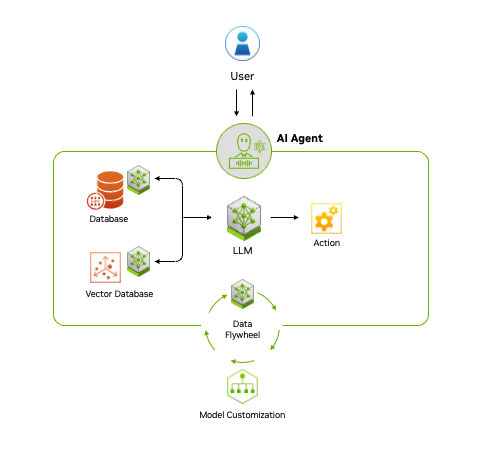Is Construction Ready for What’s Coming? A Look at McKinsey’s 2025 Tech Trends
McKinsey just dropped their 2025 Technology Trends Outlook, and it’s clear—tech isn’t slowing down for anyone. What surprised me, though, is how many of these trends feel eerily relevant to construction, even if the industry isn’t the headline act. From AI agents to immersive reality, these aren’t just buzzwords anymore. They’re slowly seeping into construction workflows from marketing to job trailers. So I took a step back and asked—how close are we, really, to using these in our daily workflows?
Let’s start with Agentic AI. It’s not just chatbots anymore—these are autonomous systems that can plan, decide, and execute multi-step tasks with little to no human help. Think of an AI assistant that doesn’t just write your email, but also books the meeting, pulls up the right project files, and loops in the right stakeholders. Could we one day ask it to draft an RFP response by pulling from our company history and similar projects and maybe even send it out to the client with a tailored schedule and estimated cost plan? On the marketing side, I could totally see this being used to auto-generate a week of content, schedule posts, and email prospective clients. It’s still early days, but the fact that Agentic AI pulled in over $1B in equity investment last year tells me this isn’t just tech for the Silicon Valley crowd—it’s something we might be working with very soon.
Then there’s Advanced Connectivity—a $44B trend made up of 5G, Wi-Fi 6 and 7, low-Earth orbit satellites, and low-power networks. All these fancy terms boil down to one big question for me: can we finally get reliable internet on a jobsite in the middle of nowhere? You see, the faster the internet gets, the more is the domino effect —real-time video walkthroughs, remote inspections, cloud-based scheduling without lag. It’s not just about faster speeds; it’s about being able to work smarter from literally anywhere.
Cloud and edge computing pulled in nearly $81B last year—and it's not just tech companies that should care. Cloud and edge computing are reshaping how construction software is designed and deployed. Cloud platforms like AWS and Azure are ideal for centralizing large datasets, training AI models, and enabling remote access to estimating tools and BIM models—perfect for workflows that don’t rely on instant response times. In contrast, edge computing brings processing power directly to the jobsite, enabling real-time tasks like equipment monitoring, drone navigation, and sensor-based alerts without depending on internet connectivity. For data center construction, this shift means planning not just for massive centralized infrastructure but also for resilient, local edge nodes that support on-site computation, blurring the line between IT and physical construction.
Immersive reality technologies—AR, VR, smart glasses, haptics—saw $6B in investment, and I’m watching this one closely. Honestly, I thought this trend would explode before AI did. We already have tools that let us view 3D models in immersive environments, but most of them still feel clunky or cost-prohibitive for field use. What I’m waiting for is an accessible, easy-to-use headset that lets a superintendent walk a site and see embedded utilities through walls or visualize the next phase of construction without flipping through drawings. We’re close—but not quite there yet.
Now let’s talk robotics. There’s Spot, of course—but that’s just the start. Robotics in construction is still a wide-open field, and I can’t help but think we’re underestimating how fast this could scale. With $7B flowing into this space, we’ll likely see more semi-autonomous systems that can handle repetitive or hazardous tasks—rebar tying, layout, even drywall installation. The challenge isn’t whether they can do it—it’s whether we’re ready to train people to work alongside them, maintain them, and trust them.
Lastly, mobility technologies are seeing a surge, with $131B invested in 2024 alone. In our world, that might mean autonomous delivery trucks bringing materials to site without needing a full crew. Or drones that don’t need a pilot—just a set path and a purpose, like capturing progress shots or scanning for heat loss. Mobility doesn’t just mean cars—it means movement, and in construction, every movement counts toward time, cost, and safety.
So what’s the takeaway here? The trends are moving faster than our field boots can sometimes keep up with. But if you’re early in your career—this is your playground. Learn what’s out there. Tinker. Ask “what if?” more often. Because five years from now, these trends won’t be theoretical anymore—they’ll be on your jobsite, embedded in your workflows, and shaping your career whether you like it or not.


